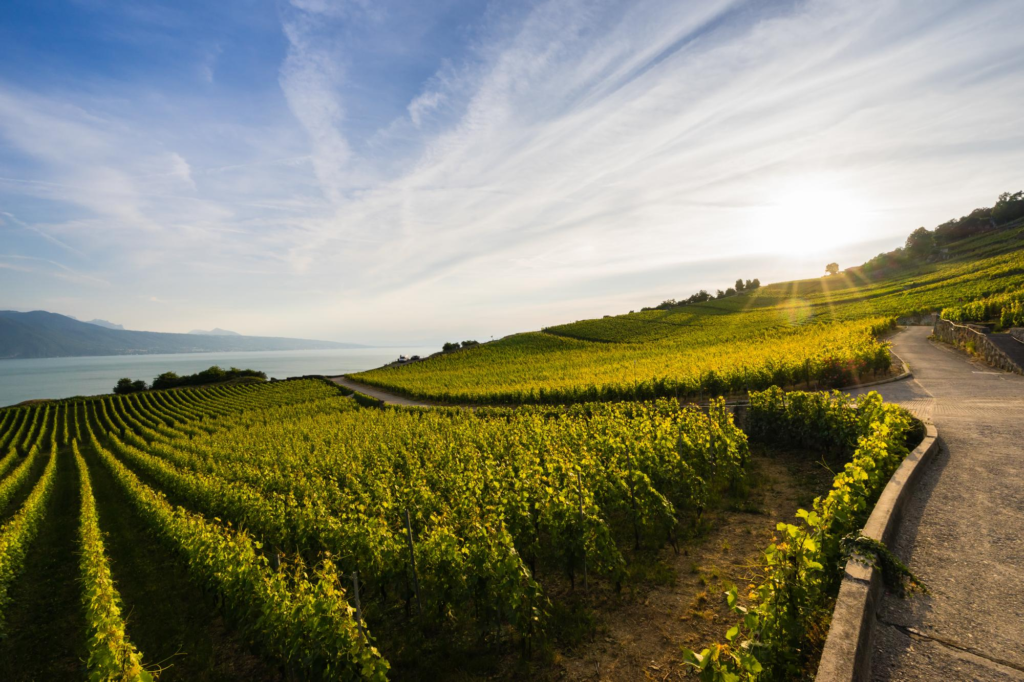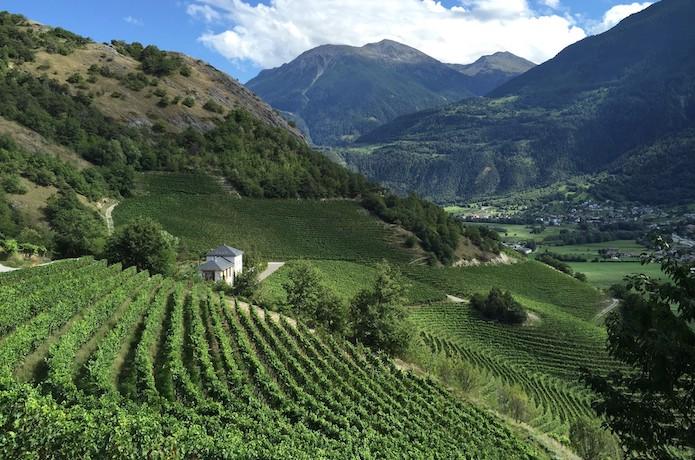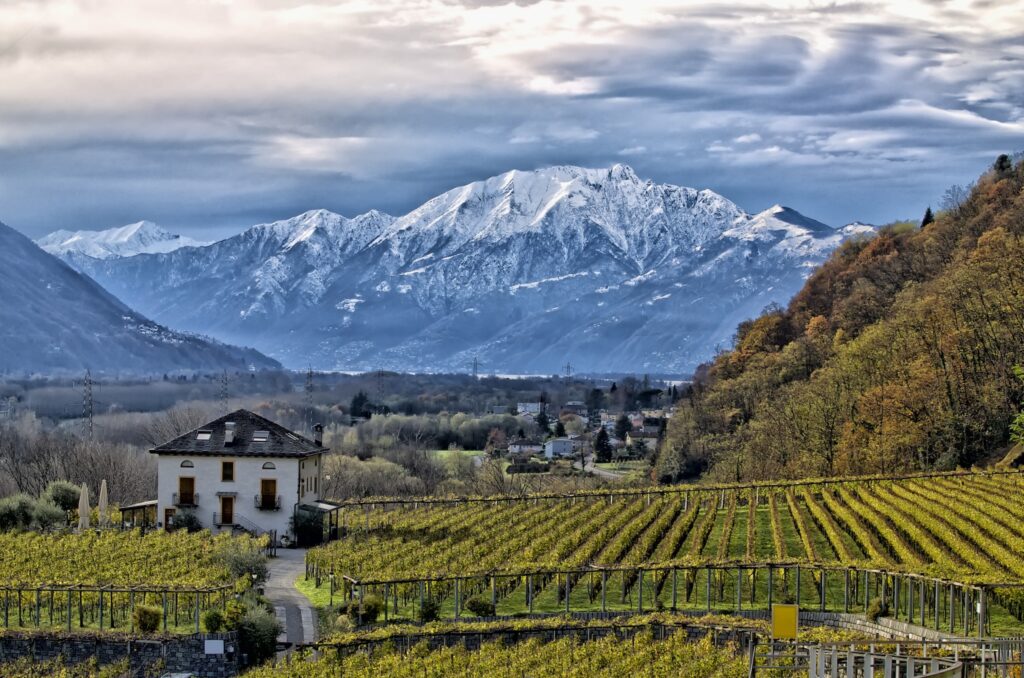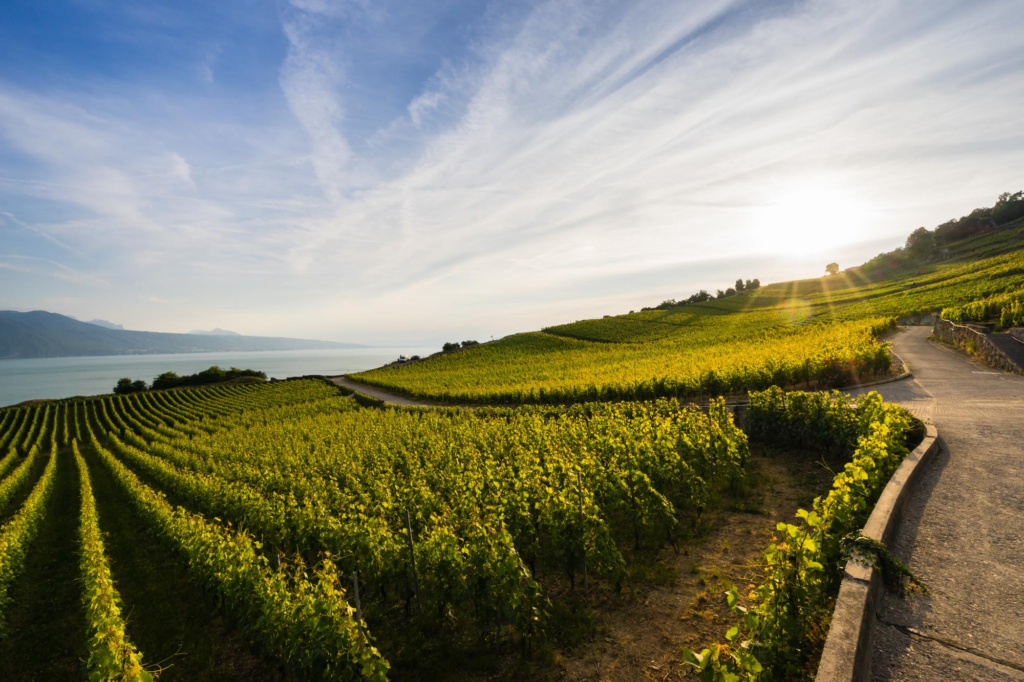By Nicki Bourlioufas


Switzerland is much more than mountains, chocolates and watches. It’s wine too. Very good wine. But to try, you need to visit the country post COVID-19 as little leaves its borders: just 2 per cent of all Swiss wine is exported.
Once you are there, there are many surprises in store. At the base of the Swiss Alps, in a little known region called Valais, you can find fabulous wines in a country with one of the highest per capita consumptions of wine in the world. Who would have guessed it! But the stuff is so good that once you taste it, you want more. Just like the chocolate.


The canton of Valais is home to the largest wine-producing region in Switzerland. You can’t help but be impressed by the incredible quality of these wines and the majesty of the often terraced vineyards, some of which sit as high as 1150 metres, and wineries, many of which are architecturally impressive and packed into the region.
After touring better-known regions in France’s Bordeaux and Loire Valley, and tasting Rhone reds through Provence, my travel companion and I stumbled on knockout wines in Valais. The hallmark of the wines we tasted was intense and very clean flavours, wines with a lot of length, something that can’t always be said of wine from the more famous regions where brands and goodwill, as much as flavour, often sell bottles.
In the Sion Valley, which lies on the same Rhone River as France’s Rhone Valley, we came across Provins, where visitors are usually charged a small fee to taste the wines. Not surprisingly, given that Provins is the largest wine producer in the country, the range was huge. So keen was our host to introduce two naive Australians to Swiss wine that we tasted all we wanted for free, both reds and whites. And it wasn’t just cool-climate whites that stood out. The reds, which account for a greater proportion of the country’s wine production, were also very memorable.
Wine has been in the country since Roman times and the Swiss now boast the fourth highest annual per capita consumption of wine in the world (33 litres a head), according to the industry association Swiss Wine. So it’s not just the Swiss chocolate delivering the antioxidants that do us all good. It’s the wine too. But unlike chocolate, and the world-famous watches, only about 2 per cent of Swiss wine is exported, as the Swiss drink it almost all of it.


Most vineyards are in the French part of Switzerland to the west. Vineyards often sit at relatively high altitudes in Valais – over 1000m – and are on steep slopes. In winter, snow often sits the vineyards, putting stress on the vines. It’s this that produces the long and intense flavours.
Our Provins host explained that so intense are the flavours of many of the Swiss wines produced from indigenous grapes that they are sometimes excluded from wine competitions. The indigenous grape varieties are too numerous to name, but one that caught our attention was Cornalin.
Traditionally known as Rouge du Pays, this old variety from Valais was on the verge of extinction until it was saved by enthusiasts in the 1970s and renamed Cornalin in 1972. s, The rescue was successful that it has now become the symbolic red wine grape of the Valais region, the only place it is grown, according to Swiss grape geneticist Dr José Vouillamoz, co-author with Jancis Robinson of the book Wine Grapes. Difficult to grow in the vineyard with variable yields, Cornalin produces colourful, fruity and juicy wines, with silky tannins.


But there are many more wines to discover. Apart from Cornalin, there are over 240 other indigenous Swiss grape varieties including Chasselas, a white grape known as Fendant in the Valais, Gamaret, Garanoir, Arvine and Amigne. The Arvine and Fendant that we tasted were elegant with sometimes intense mineral flavours that gave away their Alpine origins. The diversity of the wines is extraordinary given Switzerland is a small country with relatively small production compared to France, Spain and Italy.
A bottle of Swiss wine isn’t cheap, but that’s true of most things in Switzerland. One thing that you can be assured of is the quality. So when you spend the $20 to $40 that a bottle may cost, you know that it is likely to be a good one. You certainly can’t say that of Australian wine, where quality control is a discretionary thing.
A French-style Appellation d’Origine Contrôlée system has existed since the 1980s, and the cantons or local authorities are responsible for the quality control of the wine, which winemakers told us is strict. No surprises there.
If you’re a solo traveller but fancy a tour of the wineries through the picturesque Sion Valley, you don’t need to be alone. Visit https://www.sionwine.ch/en/#sion-wine, sionwine.ch – the only website organising activities that allow tourists to discover winemaking in the valley. There are so many wineries located there, some in amazing settings, that it is an enjoyable experience.
Image: Chateau Lichten, Loeche, Valais
More information
About Swiss Wines
- Vines have been grown in Switzerland since the Roman Empire brought them to the region
- The Swiss have the fourth highest per capita wine consumption in the world (33 litres per capita)
- Switzerland’s area of 41,285 km2 makes it the 132nd largest country in the world
- It devotes 148 km2 to vineyards, making it 20th in the world for vinery area
- It is 10th in the world by the ratio between vineyards and total surface area
Thanks to Swiss Wine for the statistics and information.
About the author
The author Nicki Bourlioufas is a freelance writer, specialising in wines and finance. If you’d like a wine article for your website or publicaition, please email nicki@spotoncpr.com
Note by SWP: While Valais is the largest alpine and emblematic wine growing region (33%), the other five regions deserve to be mentioned: Vaud – Lavaux UNESCO (25%), German Swiss (20%), Geneva (10%). Ticino (7%), Three lakes (5%). The image is worth a thousand words, the steep vineyards are difficult to mechanise in this mountainous country and it has an impact on production costs.
